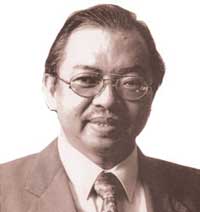WHEN I was ambassador to Pakistan, I had to rush to Kazakhstan, to which I was also accredited on a nonresident basis, to look into the condition of Filipino workers in an oil field, who found themselves in the middle of a bloody revolt of local workers against their Turkish managers. In those days, there were few direct flights to Kazakhstan, and I had to make two connections in Dubai and Istanbul. The few hours I had to spend in Istanbul served to alleviate the arduousness of the journey because they allowed me to visit the Hagia Sophia, which I had always wanted to see. The “Holy Wisdom,” as its name in Greek means, truly deserves to have figured in listings of the wonders of the world. While it has lost its title as the largest edifice on the planet, its dimensions remain awesome. Inside, however, you feel a lightness of being, coming from the many windows all around and the brilliance of the gold mosaics that were everywhere. And above, there was the incredible, gigantic central dome, surrounded by smaller domes, which have all held up through the centuries thanks to magical engineering.Indeed, the Hagia Sophia leaves one with a lasting impression.
Along with a knowledge of the edifice’s curious history, I thus followed with great interest the recent move of Turkey’s President Recep Tayyip Erdogan, under the cover of a decision by the Council of State, to reconvert the Hagia Sophia from a museum to a mosque amid expressions of condemnation and concern from Turkey’s opposition, leaders of many countries, the United Nations, and various international religious and cultural associations. The Hagia Sophia was originally built as a Christian cathedral during the reign of the Roman emperor Justinian 2nd in 532-537 AD and was the largest edifice and place of worship on the planet for a thousand years. It was converted into a mosque after the fall of Constantinople in 1453 to the Muslim Ottoman conquerors. It became a museum after World War 1 with the establishment of a secular Republic of Turkey from what remained of the Ottoman Empire. The history of Hagia Sophia explains its peculiar decoration, a combination of mosaics of Christian figures and roundels bearing calligraphic representations of God’s name. There have been sectors of course that have agitated for the reversion of Hagia Sophia to a cathedral. The move of President Erdogan would seem to indicate that those who wanted its reversion to a mosque have prevailed.
Continue reading with one of these options:
Ad-free access
P 80 per month
(billed annually at P 960)
- Unlimited ad-free access to website articles
- Limited offer: Subscribe today and get digital edition access for free (accessible with up to 3 devices)


